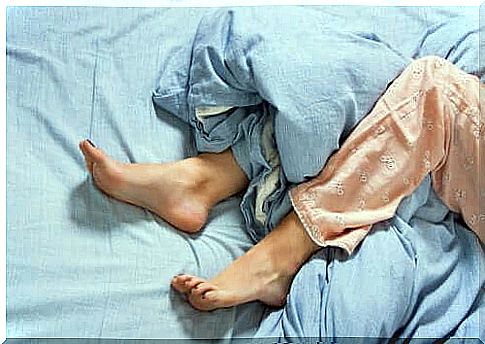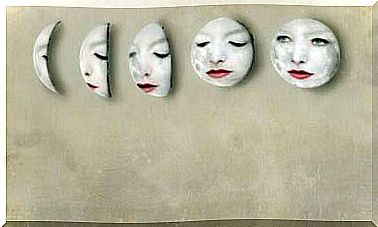Restless Legs Syndrome And The Motor Cortex

Restless legs syndrome (RLS), also known as restless legs syndrome, is difficult to describe. Some people even believe that their legs move on their own, but this is not so. What does happen, however, is that they have to constantly move their lower limbs to stop the unpleasant feeling.
Some people say they feel a tingling on their legs that goes up and down. Find out the main features of this syndrome and how it relates to the motor cortex in this article!
It’s half past eleven. I try to sleep, but it’s impossible. When I’m about to fall asleep, I get a tingling sensation in my legs. I have to move them, so I lift one leg and shake it in the air. I lift the other leg and do the same.
The tingling starts again a few minutes later. I get up and walk up and down the room. I massage my legs and even hit them a little. The tingling has subsided. I have managed to ease the symptoms of restless legs syndrome enough to fall asleep again.

What is restless legs syndrome?
According to the National Institute of Neurological Disorders and Stroke (NINDS), restless legs syndrome is a sensory-motor disorder that has five major diagnostic criteria, namely:
- A strong and often overwhelming need or urge to move the legs, often accompanied by abnormal, unpleasant or uncomfortable sensations.
- The urge to move the legs starts or worsens during rest or inactivity.
- This urge to move the legs is at least temporarily and wholly or partially relieved by movement.
- The urge to move the legs starts or gets worse in the evening or at night.
- The above four features are not due to any other medical or behavioral condition.
Restless legs syndrome and the motor cortex
Some of the main causes of this condition include:
- iron deficiency
- intake of tricyclic antidepressants
- selective serotonin reuptake inhibitors
- lithium
- caffeine
However, new discoveries see a link between restless legs syndrome and abnormal functioning of the motor cortex. Researchers at Johns Hopkins University discovered a possible cause for this syndrome: motor cortex hyperactivity.
Rachel Salas of John Hopkins University states: “ The area of the brain that controls the legs shows increased cortical excitability in the motor cortex. ”

Therapy
Pharmacological treatments
- Dopamine agonists such as ropinirole, pergolide or pramipexole.
- Benzodiazepines help soothe the tingling sensation and also make it easier to fall asleep.
- Anticonvulsants, such as gabapentin and carbamazepine.
- Opioids can also be used for their analgesic effects.
Non-pharmacolic treatments
- Having a sleep routine and going to bed at the same time every day.
- Reducing or suppressing the consumption of caffeine, alcohol and nicotine.
- Regular exercise can also help, but not excessively.
Conclusion
So there is still a lot to discover about restless legs syndrome (RLS) to improve the quality of life of patients. Reducing the symptoms of this syndrome will, however, lead to better sleep hygiene and sleep quality. It may also improve drowsiness, fatigue and mood swings.









